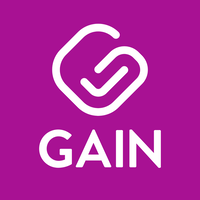 Most mobile and web applications were developed to make the lives of marketing teams easier. The cruel irony of the modern workplace, however, is that apps have become so commonplace that the sheer number of them can hinder workplace productivity. App overload is a phenomenon halting the progress of marketing teams all over the world.
Most mobile and web applications were developed to make the lives of marketing teams easier. The cruel irony of the modern workplace, however, is that apps have become so commonplace that the sheer number of them can hinder workplace productivity. App overload is a phenomenon halting the progress of marketing teams all over the world.
But how significant of an issue is app overload? How much time and productivity does it sap from a company? And most importantly, what can be done to streamline app overload issues to create a more efficient workflow?
By the numbers
Fortune.com polled 881 global business professionals and found that the average worker uses 9.4 apps at work on a daily basis and the average IT worker uses 10.4.
Even though this number might seem unbelievable at first, it is important to remember that as a marketer, you probably need an app for every platform you manage content on, including Facebook, Twitter, Instagram, LinkedIn, Google+, and more. When you couple that with inter-office communication apps, customer retention management programs, spreadsheets, Word documents, and cloud-based media storage platforms, it creates a daunting tornado of electronic chaos that teams must navigate their way through, every single day.
Perhaps the most time-consuming app of all comes in the form of email. Fortune goes on to say that 50% of the study’s respondents claimed that they check their email accounts more than five times per hour. In a nine-hour workday, that’s 45 times per day. If it takes a worker an average of three minutes to check their email, they’re wasting 135 minutes of their nine-hour workday clicking back-and-forth to their email account. That’s over two hours of time wasted each day.
If a company is paying an average rate of $11 per hour, they’re wasting $22 of payroll on needless application time per-employee, per-day. With a five-day work week, 52 weeks out of the year, that’s an average of 260 working days in a calendar year. That comes out to $5,720 every year in time used solely for employees to check their email accounts.
Also Read: How App Science Will Lead to Better Predictive AI
Increasing apps often decreases productivity
The most effective workplaces operate in an organized manner. A chaotic desktop stuffed to the brim with multiple apps, all of which need attention, flies in the face of basic organizational principles. App overload causes a lapse in time management, effectiveness, and overall communication.
Communication is essential for the workplace team environment. Communication extends to clients, colleagues, supervisors, support services, and more. By having to navigate through a sea of applications, marketing teams will inevitably become overwhelmed, and costly mistakes will be made. This could be a simple mistake, such as being late in responding to a coworker’s request, or it could lead to larger issues such as missing an important meeting or lagging in client correspondence.
Much the same as a child who cannot find an important toy in a chaotic and messy room, workers can miss vital information and tasks when faced with an overload of applications on their workplace computer.
In the case of a marketing team, there are a number of additional stressors that add to app overload. For example, social media content has to be written first. Then, the content must be sent for approval by email and using spreadsheets or similar. Finally, content must be scheduled on a calendar before finally it is posted across a client’s various platforms. This multi-step, multi-app process leaves a large margin for error. Creating errors on clients’ social accounts can lead to dissatisfaction, termination of contracts, and can even cause major blows to a company’s overall reputation.
Also Read: The Two Mobile Trends That Cannot Be Denied
So how do we fight back against app overload?
As app overload continues to siphon wasted dollars out of businesses on a daily basis, what can workplace managers do to fight back? How can app overload be overcome, and what will it take to create more streamlined workflows?
Automated tools can offer a valuable boost in efficiency. For example, emails and social media posts can be scheduled ahead of time, ensuring that workers no longer need to log into specific apps multiple times per day manually. Information that needs to go to clients at regular intervals, strategically timed social posts, and even automated email responses can be automated with relative ease.
Evaluating how each team member manages his or her time is another valuable tactic teams can use to battle back against lost productivity. If, rather than checking email accounts five times every hour, team members checked-in once at 8 a.m., 10 a.m., 1 p.m., 2 p.m., and 5 p.m., then a lot of time switching back-and-forth between emails could be saved throughout the day.
When it comes to applications, dedicating a specific time to check or work with various apps is a good first step. For example, if you know that from 8 a.m. to 9:30 a.m. you’re going to be updating your company’s CRM with yesterday’s new contacts, then that helps you focus on the task at hand, rather than jumping haphazardly between applications all day long.
What is truly needed to combat app overload is streamlined, automated solutions which put the majority of your team’s apps in one centralized location. For example, the ability to access all social media platforms, email, and inter-office communications from one dashboard can help create a more manageable day-to-day workflow and greatly reduce the feelings of app overload.
Also Read: 7 Tactics Every Digital Marketer Should Learn to Love in 2018











